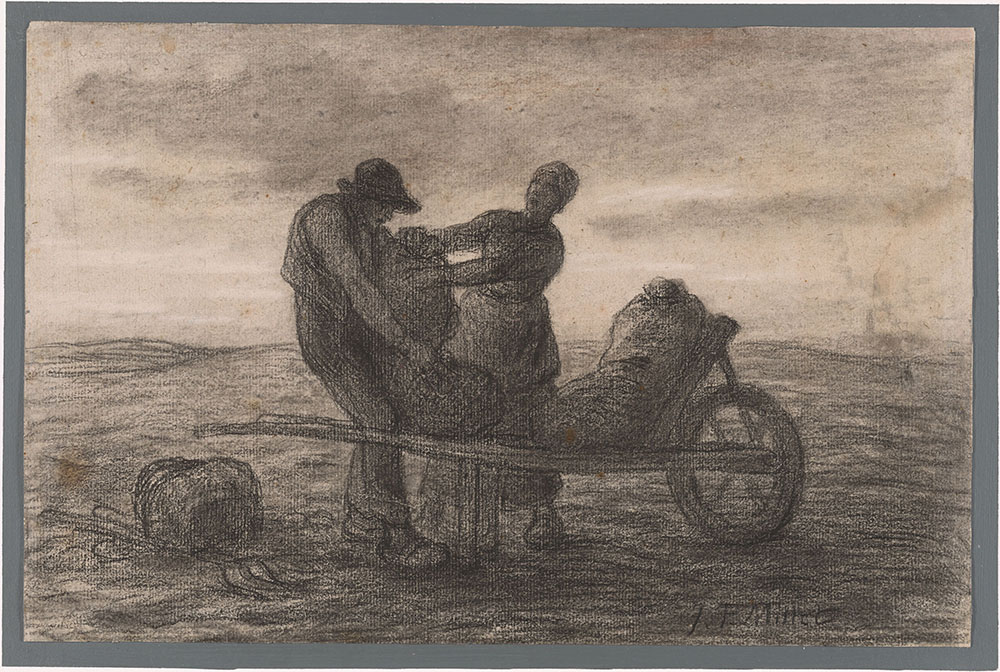
Urged to make finished drawings by his friend the art dealer Alfred Sensier, the impoverished Millet produced finished vignettes such as this sheet. Sensier referred to Millet’s group of drawings of laborers as The Epic of the Fields. Here a couple loads sacks of potatoes onto a wheelbarrow, seemingly at the end of the day. The artist’s use of black chalk across the entire surface of the rough paper—which he rubbed for soft effects in the sky and sharpened to outline the figures—renders an atmosphere that integrates the figures in their setting. Respect for rural labor in an increasingly industrialized France is a constant theme in Millet’s drawings.
Jean-François Millet
French; 1814–1875
The Potato Harvest, ca. 1853
Black and white chalk
2010.114
Born in a small Norman village and steeped in the realities of farm life. Millet became the quintessential painter of rural labor, and many can call to mine the image of his gleaners or sower at work in the wheat fields in France. This hushed scene of an exhausted couple loading heavy sacks of newly harvested potatoes onto a cart as dusk falls was made when the struggling Millet was living with his family in the village of Barbizon near the forest of Fontainebleau. Rather than produce grand subjects from ancient history or lush fantasies of Turkish baths as his contemporaries were doing, Millet opted to depict laborers going about the arduous tasks of rural life at a time of increasing industrialization when many were flocking to cities for employment.
Encouraged by his dealer to produce finished drawings for sale, Millet began working on large-scale narrative scenes of agricultural life. When a group of these drawings were sold after the artist's death, they were referred to collectively as The Epic of the Fields. Millet visually chronicled this world more than 30 years before Emile Zola published Germinal, his masterful naturalist tale of a coal mining village set in the 1860s. The use of black chalk over the entire surface of the sheet and the strong contours and humble subjects of Millet's monumental drawings would prove hugely influential on artists from Van Gogh to Seurat.
